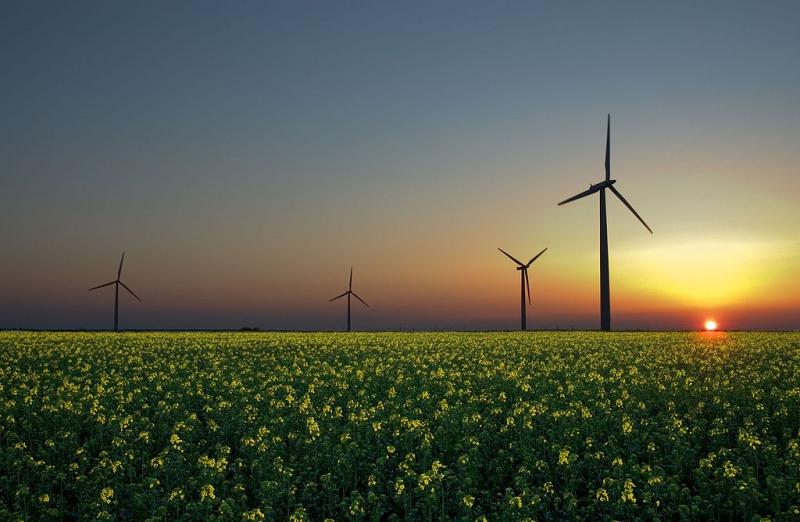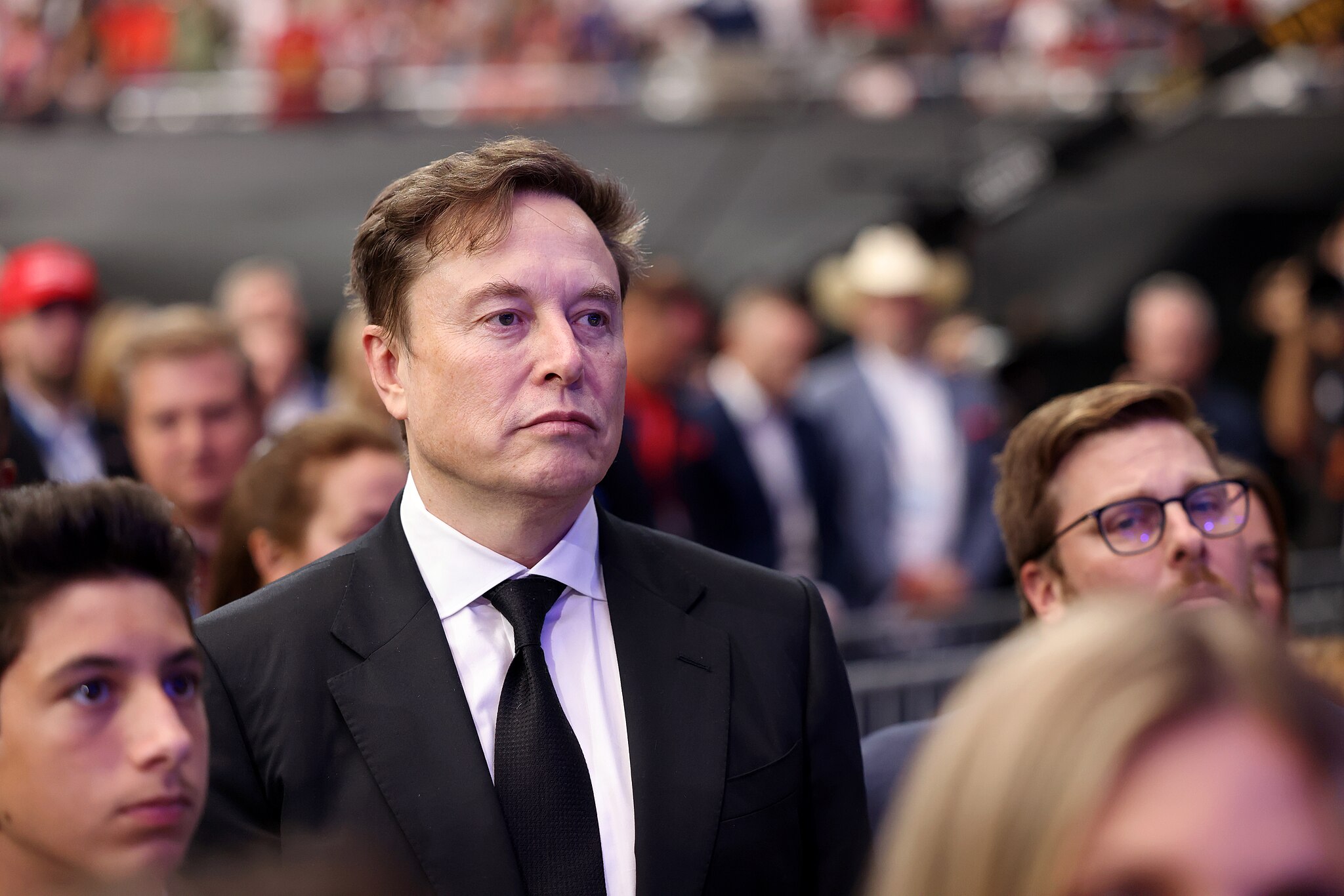News
Bill Gates follows Musk into cleantech with $1 billion Breakthrough Energy Ventures fund

Bill Gates, Microsoft co-founder, is joining a cleantech fund that will invest in companies developing low-cost, low-carbon technologies. The announcement comes as Tesla, which over the past year and a half has evolved from a premium electric car maker into a multifaceted sustainable energy company, is at the pinnacle of cleantech innovation and investment. In fact, Tesla, has continually modeled how sustainable energy generation, and storage, can both revolutionize global energy consumption and be a profitable business venture.
The Gates fund, called Breakthrough Energy Ventures (BEV), intends to provide reliable and affordable power without contributing to climate change. Their goals are to address emissions in five key areas: electricity, transportation, agriculture, manufacturing, and buildings. “Many people aren’t willing or able to pay a huge premium (for clean energy), beyond what they pay for hydrocarbon energy,” Gates stated. “The way you get to success is to get lower carbon energy at a lower cost.”
Gates added that he and other investors, who include Amazon.com chief executive Jeff Bezos, LinkedIn chairman Reid Hoffman, Alibaba chairman Jack Ma, and retired hedge fund manager John Arnold, hope to convince the Trump administration to maintain or increase government funding for energy research and development. “It’s a fantastic investment, even if you don’t look at the climate change piece of this.”
Tesla’s CEO, Elon Musk, on the other hand, has never dismissed the importance of accelerating the advent of sustainable energy as integral to continued healthy life on the planet. He understands that runaway global warming is an existential threat to Earth-based human civilization. He acknowledges readily that “virtually all scientists agree that dramatically increasing atmospheric and oceanic carbon levels is insane” and has been a vocal proponent of the intersection of technology, alternative energy investments, and worker training for a stable energy future with the incoming Trump administration.
With the launch of Tesla’s battery business and the recent acquisition of the SolarCity, the nation’s leading rooftop solar installer, Tesla is already immersed in most of the capital ventures that Gates’ BEV group is targeting. Musk has led a renewable energy enterprise network of companies, so that solar roofs are seamlessly integrated with battery storage systems. In essence, Tesla’s multiple energy interfaces have the capacity to turn individuals into their own utilities, decentralizing energy conglomerates while reducing carbon emissions from the atmosphere.
The Gates’ BEV group acknowledges that moving into the arena of renewable energy is likely fraught with challenges. Concerns particularly surround investing in early-stage companies against the backdrop in which fund investors expect to make a profit. “Some of these investments will result in ideas that move forward and some won’t; developing some may even make work on others unnecessary,” they outline. “The Breakthrough Energy Coalition believes, though, that all of them are avenues worth investigating to get the world to a zero-emissions future. Nobody knows yet what the energy mix of tomorrow is, so investors need to explore all possible paths.”
The lure of opportunities in the U.S. $6 trillion global energy market drives the BEV group forward, hoping their U.S. $1 billion cleantech fund will circumvent the tenuous nature of technology startups. Tech startups have highest rate of failure among all industries mainly due to number of uncertainties that come with launching a new yet unproven company.
Meanwhile, Tesla, with its years of R&D, is moving ahead with plans for an expanded vehicle product line that includes heavy-duty trucks and large passenger transport vehicles. Musk wants to expand Tesla’s line to “cover the major forms of terrestrial transport,” which are, in short, trucks, busses, and a ride-sharing system based on full self-driving capabilities.
If you’re interested in seeing how the BEV group’s vision compares to Tesla’s, download their mission statement here.

Elon Musk
Judge clears path for Elon Musk’s OpenAI lawsuit to go before a jury
The decision maintains Musk’s claims that OpenAI’s shift toward a for-profit structure violated early assurances made to him as a co-founder.

A U.S. judge has ruled that Elon Musk’s lawsuit accusing OpenAI of abandoning its founding nonprofit mission can proceed to a jury trial.
The decision maintains Musk’s claims that OpenAI’s shift toward a for-profit structure violated early assurances made to him as a co-founder. These claims are directly opposed by OpenAI.
Judge says disputed facts warrant a trial
At a hearing in Oakland, U.S. District Judge Yvonne Gonzalez Rogers stated that there was “plenty of evidence” suggesting that OpenAI leaders had promised that the organization’s original nonprofit structure would be maintained. She ruled that those disputed facts should be evaluated by a jury at a trial in March rather than decided by the court at this stage, as noted in a Reuters report.
Musk helped co-found OpenAI in 2015 but left the organization in 2018. In his lawsuit, he argued that he contributed roughly $38 million, or about 60% of OpenAI’s early funding, based on assurances that the company would remain a nonprofit dedicated to the public benefit. He is seeking unspecified monetary damages tied to what he describes as “ill-gotten gains.”
OpenAI, however, has repeatedly rejected Musk’s allegations. The company has stated that Musk’s claims were baseless and part of a pattern of harassment.
Rivalries and Microsoft ties
The case unfolds against the backdrop of intensifying competition in generative artificial intelligence. Musk now runs xAI, whose Grok chatbot competes directly with OpenAI’s flagship ChatGPT. OpenAI has argued that Musk is a frustrated commercial rival who is simply attempting to slow down a market leader.
The lawsuit also names Microsoft as a defendant, citing its multibillion-dollar partnerships with OpenAI. Microsoft has urged the court to dismiss the claims against it, arguing there is no evidence it aided or abetted any alleged misconduct. Lawyers for OpenAI have also pushed for the case to be thrown out, claiming that Musk failed to show sufficient factual basis for claims such as fraud and breach of contract.
Judge Gonzalez Rogers, however, declined to end the case at this stage, noting that a jury would also need to consider whether Musk filed the lawsuit within the applicable statute of limitations. Still, the dispute between Elon Musk and OpenAI is now headed for a high-profile jury trial in the coming months.
News
Tesla Giga Shanghai celebrates 5 million electric drive unit milestone
The milestone was celebrated by the company in a post on its official Weibo account.

Tesla China has reached another manufacturing milestone at Gigafactory Shanghai, rolling out the facility’s 5 millionth locally produced drive unit.
The milestone was celebrated by the company in a post on its official Weibo account. In its post, the Giga Shanghai team could be seen posing with the 5 millionth drive unit.
Giga Shanghai’s major benchmark
The milestone drive unit was produced at Gigafactory Shanghai, which produces the Model Y and the Model 3. In a release, Tesla China noted that its three-in-one integrated electric drive system combines the motor, gearbox, and inverter into a single compact assembly. This forms a powerful “heart” for the company’s electric cars.
Tesla China also noted that its drive units’ integrated design improves energy conversion efficiency while reducing overall weight and complexity, benefits that translate into stronger performance, improved handling, and longer service life for its vehicles.

The new milestone builds on earlier achievements at the same site. In July 2024, Tesla announced that its 10 millionth electric drive system globally had rolled off the line at the Shanghai plant, making it the first self-produced Tesla component to reach that volume.
More recently, the factory also produced its 4 millionth China-made vehicle, a Model Y L. The factory has also continued hitting global production milestones, rolling out Tesla’s 9 millionth EV worldwide late last year, with the landmark vehicle being a Tesla Model Y.
Tesla China’s role
Construction of Giga Shanghai began in January 2019, with production starting by the end of that year. This made it the first wholly foreign-owned automotive manufacturing project in China. The facility began delivering Model 3 vehicles locally in early 2020 and added Model Y production in 2021. The plant is now capable of producing about 1 million vehicles annually.

Throughout 2025, Giga Shanghai delivered 851,732 vehicles, representing a 7.08% year-on-year decline, according to data compiled by CNEVPost. Even so, recent months showed renewed momentum.
In December alone, Tesla China recorded wholesale sales of 97,171 vehicles, including domestic deliveries and exports, making it the company’s second-best monthly total on record, per data from the China Passenger Car Association. Retail sales during December reached roughly 94,000 units, up about 13% year over year.
Investor's Corner
Tesla price target boost from its biggest bear is 95% below its current level

Tesla stock (NASDAQ: TSLA) just got a price target boost from its biggest bear, Gordon Johnson of GLJ Research, who raised his expected trading level to one that is 95 percent lower than its current trading level.
Johnson pushed his Tesla price target from $19.05 to $25.28 on Wednesday, while maintaining the ‘Sell’ rating that has been present on the stock for a long time. GLJ has largely been recognized as the biggest skeptic of Elon Musk’s company, being particularly critical of the automotive side of things.
Tesla has routinely been called out by Johnson for negative delivery growth, what he calls “weakening demand,” and price cuts that have occurred in past years, all pointing to them as desperate measures to sell its cars.
Johnson has also said that Tesla is extremely overvalued and is too reliant on regulatory credits for profitability. Other analysts on the bullish side recognize Tesla as a company that is bigger than just its automotive side.
Many believe it is a leader in autonomous driving, like Dan Ives of Wedbush, who believes Tesla will have a widely successful 2026, especially if it can come through on its targets and schedules for Robotaxi and Cybercab.
Justifying the price target this week, Johnson said that the revised valuation is based on “reality rather than narrative.” Tesla has been noted by other analysts and financial experts as a stock that trades on narrative, something Johnson obviously disagrees with.
Dan Nathan, a notorious skeptic of the stock, turned bullish late last year, recognizing the company’s shares trade on “technicals and sentiment.” He said, “From a trading perspective, it looks very interesting.”
Tesla bear turns bullish for two reasons as stock continues boost
Johnson has remained very consistent with this sentiment regarding Tesla and his beliefs regarding its true valuation, and has never shied away from putting his true thoughts out there.
Tesla shares closed at $431.40 today, about 95 percent above where Johnson’s new price target lies.








